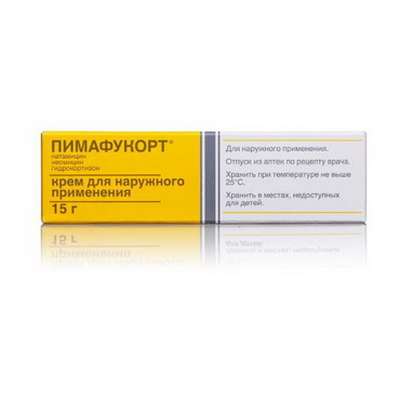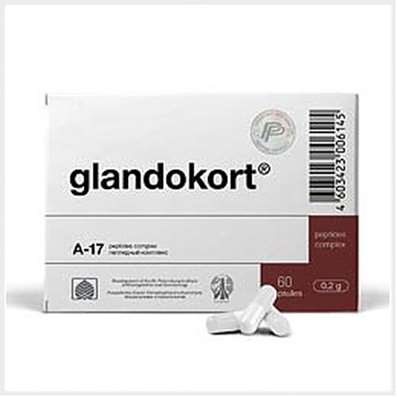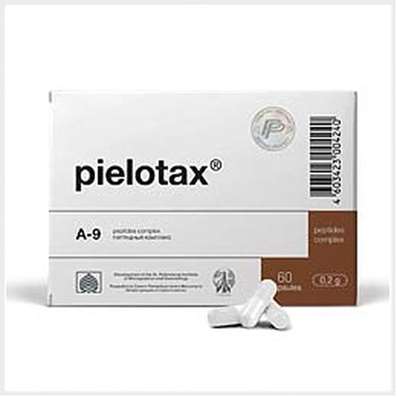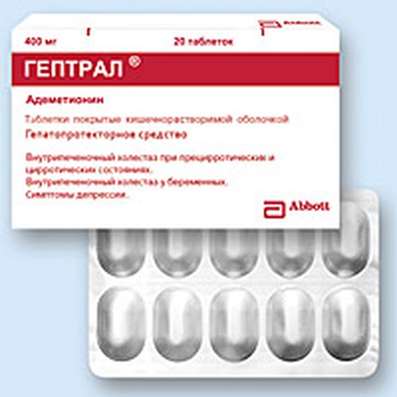Instruction for use: Ixel
I want this, give me price
Dosage form: capsules
Active substance: Milnacipran*
ATX
N06AX17 Milnacipran
Pharmacological groups:
Antidepressant
The nosological classification (ICD-10)
F32 Depressive episode: Adynamic subdepression; Astheno-adynamic subdepressive states; Asthenoadressive disorder; Astheno-depressive disorder; Asthenodepressive state; Astheno-depressive state; Major Depressive Disorder; Vyaloapatichesky depression with retardation; Double Depression; Depressive pseudodement; Depressive illness; Depressive mood disorder; Depressive disorder; Depressive mood disorder; Depressive state; Depressive disorders; Depressive syndrome; Depressive syndrome larviated; Depressive syndrome in psychoses; Depressed masks; Depression; Depression Depletion; Depression with the phenomena of inhibition within the framework of cyclothymia; Depression is smiling; Involutional depression; Involutionary melancholy; Involutional depression; Manic-depressive disorder; Masked Depression; Melancholic Attack; Neurotic depression; Neurotic depression; Shallow Depression; Organic depression; Organic depressive syndrome; Simple depression; Simple melancholic syndrome; Psychogenic depression; Reactive depression; Reactive depression with moderate psychopathological symptoms; Reactive depressive states; Reactive depression; Recurrent depression; Seasonal depressive syndrome; Severostatic depression; Senile Depression; Symptomatic Depression; Somatogenic depression; Cyclotymic depression; Exogenous depression; Endogenous depression; Endogenous Depressive Conditions; Endogenous Depression; Endogenous depressive syndrome
F33 Recurrent depressive disorder: Major depressive disorder; Secondary depression; Double Depression; Depressive pseudodement; Depressive mood disorder; Depressive disorder; Depressive mood disorder; Depressive state; Depressive syndrome; Depressed masks; Depression; Depression is smiling; Involutional depression; Involutional depression; Masked Depression; Melancholic Attack; Reactive depression; Reactive depression with moderate psychopathological symptoms; Reactive depressive states; Exogenous depression; Endogenous depression; Endogenous Depressive Conditions; Endogenous Depression; Endogenous depressive syndrome
Composition
| Capsules | 1 caps. |
| Composition, see table |
| Component | Amount of component in capsule, mg | |
| capsules 25 mg | capsules 50 mg | |
| Active substance | ||
| milnacipran hydrochloride | 25 | 50 |
| Excipients | ||
| calcium hydrogen phosphate dihydrate | 50,925 | 101,85 |
| carmellose calcium | 22,15 | 44,3 |
| povidone K30 | 2,1 | 4,2 |
| Silica colloidal dioxide | 0,625 | 1,25 |
| magnesium stearate | 2,1 | 4,2 |
| talc | 2,1 | 4,2 |
| Capsule shell (lid / casing) | ||
| titanium dioxide | 0,286/0,494 | 0,392/0,294 |
| dye iron oxide red | 0,024/0,042 | 0,033/0,139 |
| dye iron oxide yellow | 0,036/0,062 | 0,049/0,132 |
| gelatin | äî 14,3/24,7 | äî 19,6/29,4 |
Hard gelatin capsules ¹4, the lid is orange-pink with a black print "IXEL", the body is orange-pink with a black print "25".
Capsules, 50 mg
Hard gelatin capsules ¹3, the lid is orange-pink with a black print "IXEL", the body is orange-brown with a black print "50".
The contents of capsules for both dosages: powder from white to almost white, conglomerates (lumps) are allowed, which when pressed with a glass rod are easily turned into powder.
Pharmachologic effect
Pharmacological action - antidepressant.
Pharmacodynamics
The broad-spectrum antidepressant is a selective inhibitor of monoamine reuptake (norepinephrine and serotonin).
Milnacipran does not bind to m-holinoretseptorami, αl-adrenoreceptors and H1-histamine receptors, as well as D1- and D2-dopamine, benzodiazepine and opioid receptors. Has no sedative effect, physiologically improves night sleep and does not negatively affect cognitive function. Milnacipran has virtually no effect on the conduction system of the heart and blood pressure, which is especially important for elderly patients who are constantly taking cardiotropic drugs.
Pharmacokinetics
After ingestion, milnacipran is well absorbed. Bioavailability is 85-95% and does not depend on the characteristics and diet. Cmax in the blood plasma is reached after about 2 hours, after taking the drug in a single dose of 50 mg is about 120 ng / ml, it is directly proportional to the value of the dose. After repeated administration of the drug Css is achieved in 36-48 hours, while it is 70-100% more than after taking a single dose. The connection with plasma proteins is about 13%.
Distribution. Vd of milnacipran is about 5 l / kg.
Metabolism. Milnacipran is practically not metabolized, there is no active metabolite, it is conjugated to glucuronic acid.
Excretion. T1 / 2 milnacipran is 6-8 hours after a single dose, the active d isomer is T1 / 2 8-10 hours, and the l isomer is 4-6 hours.
Renal and adrenal clearance are equivalent, 55% of the administered dose (24% of l-isomer and 31% of d-isomer) are excreted unchanged, 17% of l-isomer and only 2% of d-isomer in the form of conjugate with glucuronic acid. About 8% is excreted as N-desethyl milnacipran. The total ground clearance is about 40 l / h.
Against the background of course treatment, milnacipran is completely eliminated from the body within 2-3 days after discontinuation of the drug.
Special patient groups
Patients with impaired renal function. In patients with impaired renal function, the rate of release of milnacipran decreases in proportion to the severity of the disease. AUC in patients with insignificant (Cl creatinine - 50-80 ml / min), moderate (Cl creatinine - 30-49 ml / min) and expressed (5-29 ml / min) CRF compared with healthy people increases by 16, 52 and 199%, and T1 / 2 - by 38, 41 and 122%.
Patients with impaired hepatic function. In individuals with mild to moderate hepatic insufficiency (A and B on the Child-Pugh scale), AUC and T1 / 2 do not differ from healthy people. In patients with severe hepatic insufficiency (class C on the Child-Pugh scale), these parameters are higher by 31 and 55%, respectively, and therefore some caution is required when assigning this category of patients to Ixell, although the dosage regimen and not required.
Patients over 65 years of age. Cmax and AUC of milnacipran in elderly people (over 65 years of age) are 30% higher (compared with younger individuals) (decrease in creatinine clearance with age), however, no special correction of the dosing regimen in elderly people with unbroken renal function is required.
Features of pharmacokinetics, depending on sex. Cmax and AUC milnacipran in women is 20% higher than in men, a change in the dosing regimen is not required.
Indications of the drug Ixel
A major depressive episode in people over 18 years of age.
Contraindications
hypersensitivity to milnacipran and other components of the drug;
simultaneous reception of nonselective and selective MAO inhibitors of types A and B, as well as agonists of 5HT1D-serotonin receptors (including sumatriptan), digoxin;
simultaneous appointment with epinephrine, norepinephrine, clonidine and similar compounds;
uncontrolled arterial hypertension, severe or unstable course of coronary heart disease, as these conditions can be exacerbated by the side effects of the drug;
concomitant obstruction of the urinary tract (mainly in prostatic hyperplasia);
the period of breastfeeding;
age to 18 years.
Carefully:
- Patients with renal insufficiency (a dose reduction may be required due to elongation of T1 / 2 milnacipran);
- patients who have a history of impaired urine outflow (especially with prostatic hyperplasia and other diseases of the urinary tract);
- Patients with closed-angle glaucoma;
- Patients with arterial hypertension or heart disease, in which an increase in heart rate is undesirable;
- Patients with epilepsy (including in the anamnesis);
- elderly persons, patients taking diuretics or other drugs that can cause hyponatraemia (cases of hyponatremia developing with the use of serotonin reuptake inhibitors, which may be associated with the syndrome of inadequate secretion of the antidiuretic hormone), patients with cirrhosis or malnutrition;
- Patients simultaneously receiving indirect anticoagulants (eg warfarin), antiaggregants (including acetylsalicylic acid and other NSAIDs) or other drugs that may increase the risk of bleeding. Also, care should be taken when prescribing the drug to patients who have a history of blood clotting disorders (in the treatment of serotonin reuptake inhibitors, cases of bleeding are described).
Application in pregnancy and lactation
Due to the lack of data on the efficacy and safety of milnacipran in pregnant women, the use of Ixel during pregnancy is not recommended.
Milnacipran penetrates into breast milk. The drug Ixel is contraindicated in the period of breastfeeding.
Side effects
Adverse reactions are systematized according to the system-organ classes and are listed according to the following gradation: very often - 1/10 appointments (≥10%); often - 1/100 appointments (≥1% but <10%); infrequently - 1/1000 appointments (≥0.1% but <1%); rarely - 1/10000 prescriptions (≥0.01% but <0.1%); very rarely - less than 1/10000 prescriptions (<0.01%); frequency is unknown - single post-marketing messages, the frequency can not be estimated from available data.
On the part of the blood and lymphatic system: the frequency is unknown - hemorrhages in the skin and mucous membranes (ecchymosis).
From the immune system: infrequently - hypersensitivity; rarely anaphylactic shock.
From the endocrine system: rarely - a violation of the secretion of antidiuretic hormone.
From the side of metabolism and nutrition: infrequently - hyperlipidemia, weight loss; frequency is unknown - hyponatremia.
Mental disorders: often - agitation, anxiety, depression, eating disorder, sleep disturbance, suicidal behavior (suicide attempts and suicidal thoughts); infrequently - panic attacks, confusion, delusions, hallucinations, mania, decreased libido, nightmarish dreams, suicidal tendencies of thinking; rarely - derealization, pathological thinking, mental disorder.
From the nervous system: very often - headache; often - migraine, tremor, dizziness, dysesthesia (sensitivity disorder), drowsiness; infrequently - memory impairment, akathisia, imbalance, violation of taste sensations, fainting; rarely - acute disturbance of cerebral circulation, dyskinesia, trembling paralysis (parkinsonism), convulsions; the frequency is unknown - serotonin syndrome (the following symptoms may be observed: psychic (agitation, confusion, hypomanic state, coma), motor (myoclonus, tremor, hyperreflexia, rigidity, hyperactivity), vegetative (hypo- or hypertension, tachycardia, tremors, hyperthermia, increased sweating), gastrointestinal (diarrhea), convulsions.
From the side of the organ of vision: infrequent - a feeling of dry eyes, pain in the eyes, mydriasis, disruption of accommodation, blurred vision, impaired vision.
From the side of the organ of hearing and labyrinthine disturbances: infrequently - the sensation of noise in the ears, vertigo.
From the heart: often - tachycardia, a feeling of heartbeat; infrequent - a violation of the heart rhythm, blockade of the bundle branch, extrasystole, myocardial infarction; rarely - angina.
From the side of the vessels: often - a sensation of hot flushes to the head, hypertension; infrequently - Raynaud's disease, arterial hypotension, orthostatic hypotension.
From the respiratory system, chest and mediastinum: infrequently - cough, dyspnoea, dry nasal mucosa, pharyngeal disorders.
From the digestive tract: very often - nausea; often - constipation, diarrhea, abdominal pain, indigestion, vomiting, dry mouth; infrequently - colitis, gastritis, a violation of the motility of the gastrointestinal tract, a feeling of discomfort in the digestive tract, bloating, peptic ulcer of the stomach and duodenum, hemorrhoids, stomatitis.
From the side of the liver and bile ducts: infrequently - increase in the level of liver enzymes; rarely - hepatitis, hepatocellular disorders; frequency unknown - cytolytic hepatitis.
From the skin and subcutaneous tissues: often - itching, rash, increased sweating; infrequently - an allergic rash (hives), dermatitis, dermatosis; rarely photosensitization reactions.
From the osteomuscular system and connective tissue: often - musculoskeletal pain; infrequently - rigidity of muscles, myalgia.
From the side of the kidneys and urinary tract: often - difficulty urinating, frequent urination; infrequently - chromaturia, urinary incontinence, urinary retention.
On the part of the genital organs and breast: often - violations of ejaculation, erectile dysfunction, testicular pain; infrequently - amenorrhea, hypermenorrhea, menstruation, uterine bleeding, dysfunction of the prostate gland.
General disorders and disorders at the injection site: often - a feeling of fatigue; infrequently - fever, chest pain, chills, poor health, a feeling of malaise.
Interaction
Milnacipran (even at concentrations 25 times higher than the average) does not affect the system of microsomal oxidation in hepatocytes (CYP1A2, CYP2A6, CYP2B6, CYP2C8, CYP2C9, CYP2C19, CYP2D6, CYP3A4 / 5), so there is no interaction expected with inducers and inhibitors of microsomal oxidation.
Carbamazepine, fluoxetine, lorazepam - no interaction with milnacipran.
Clomipramine - when transferring patients with clomipramine (75 mg / day) to milnacipran (100 mg / day), there was no significant change in the pharmacokinetic parameters of the latter. At the same time, in these cases, patients need more careful observation, since with such a transfer (without a period of washing), there are more frequent euphoria and postural hypotension, and the risk of developing a serotonin syndrome increases.
Non-selective MAO inhibitors (iproniazide) - the risk of serotonin syndrome increases. After the termination of treatment with an MAO inhibitor, a break of 2 weeks is necessary before starting the treatment with milnacipran, and a break after the end of treatment with milnacipran and before starting the MAO inhibitor should be at least 1 week.
Selective MAO inhibitor type B (selegiline) - the risk of a sudden increase in blood pressure increases. After the termination of treatment with a selective MAO B inhibitor, a break of 2 weeks is necessary before the start of the treatment with milnacipran, and the interval after the end of treatment with milnacipran and before the commencement of the intake of the selective MAO inhibitor of type B should be at least 1 week.
Agonists of 5-HT1D serotonin receptors (including sumatriptan) increase the risk of a pronounced increase in blood pressure, spasm of the coronary arteries as a result of cumulation of serotonergic effects of drugs. It is necessary to take a break between the end of treatment with milnacipran and the start of the course of therapy with agonists of 5-HT1D serotonin receptors for a period of 1 week.
Cardiac glycosides (including digoxin) - the risk of increasing the severity of the action on the CAS is increased (especially with the parenteral route of administration of digoxin).
Diuretics - increase the risk of hyponatremia.
Lithium preparations increase the risk of developing serotonin syndrome, while milnacipran does not affect the pharmacokinetics of lithium preparations.
Milnacipran should not be used concurrently with the following drugs:
- epinephrine, norepinephrine (parenteral administration) - a sharp increase in the risk of BP elevation with the likelihood of heart rhythm disturbances (inhibition of the capture of catecholamines by sympathetic nerve fibers);
- clonidine and other drugs with a similar mechanism of action - a decrease in the hypotensive effect of clonidine (antagonism with adrenergic receptors);
- selective MAO inhibitors type A (moclobemide, toloxaton) - a sharp increase in the risk of developing serotonin syndrome.
Dosing and Administration
Inside. The average daily dose of the drug in adults is 100 mg. The daily dose should be taken in 2 divided doses of 50 mg (1 capsule morning and evening) during meals.
In patients with renal insufficiency, a dose selection is necessary. The daily dose is reduced depending on the degree of decrease in kidney function.
Recommended dosage regimen
| Cl creatinine, ml / min | Daily dose |
| ≥60 | 50 mg×2 times |
| 30–60 | 25 mg×2 times |
| 10–30 | 25 mg |
As in the case of the use of other antidepressants, the effectiveness of milnacipran is manifested in an average of 1-3 weeks of continuous intake. To prevent recurrence, treatment should continue for several months (usually 6 months).
Duration of the drug is set individually.
To avoid the development of the withdrawal syndrome, stopping the drug Ixel should be carried out gradually and with careful monitoring of the patient.
Overdose
Symptoms: nausea, vomiting, increased sweating, constipation.
After taking the dose of the drug more than 800-1000 mg - vomiting, shortness of breath, tachycardia. After taking an excessively high dose (1900-2800 mg) in combination with other psychotropic drugs (most often benzodiazepines), the symptoms described above are accompanied by drowsiness, hypercapnia, and impaired consciousness.
There was no evidence of cardiotoxicity in the overdose of milnacipran.
Milnacipran has no specific antidote.
Treatment: gastric lavage, reception of activated charcoal, subsequent symptomatic therapy. It is recommended to monitor the patient for at least 24 hours.
Special instructions
When combined prescription of drugs that affect the reuptake of serotonin with drugs that suppress its metabolism (including MAO inhibitors and neuroleptics), the development of serotonin syndrome is possible. Serotonin syndrome or malignant neuroleptic syndrome (manifested by increased nervous excitability, development of hallucinations, coma, tachycardia, AD lability, hyperthermia, hyperreflexia, impaired coordination of movements, nausea, vomiting, diarrhea) presents a potential danger to the life of the patient.
The drug Ixel can be prescribed not earlier than 2 weeks after the abolition of MAO inhibitors. The time interval from the moment of stopping the use of Ixel before starting therapy with MAO inhibitors should be at least 1 week.
Ixel should be used with extreme caution in patients with prostatic hyperplasia, epileptic seizures, as well as in patients with hypertension or hypertrophic cardiomyopathy (especially obstructive).
Children, adolescents and people younger than 24 years with the appointment of antidepressants increase the risk of suicidal thoughts and suicidal behavior, and therefore, when appointing milnacipran for this category of people, the risk of suicide and the benefits of their use should be correlated.
In short-term studies in patients older than 24 years, the risk of suicide did not increase, and in individuals older than 65 years even slightly decreased. During treatment with antidepressants, all patients should be monitored for early detection of disorders or behavioral changes, as well as suicidal tendencies.
Drugs that suppress the re-uptake of norepinephrine and serotonin (including milnacipran) can cause an increase in blood pressure and a rapid increase in heart rate. However, it should be noted that the severity of these phenomena against the background of taking the recommended doses is usually minor, it is not felt by patients and usually does not require medical correction. Studies on the effect of milnacipran on blood pressure in patients with concomitant uncontrolled arterial hypertension, as well as heart rate in patients with rhythm disturbances, have not been carried out to date. However, before the start of treatment, during the selection of doses and during treatment, control over the level of blood pressure and heart rate is required. Persons suffering from arterial hypertension or other CAS diseases before prescribing milnacipran should choose an effective therapy.
The cases of an increase in the activity of hepatic transaminases (up to 3 times higher than UGN) in patients with milnacipran are described. A clinically significant increase in bilirubin was not observed. In the literature there are some reports of the development of toxic hepatitis in patients on the background of taking milnacipran, however, according to these reports, a clear cause-and-effect relationship can not currently be tracked (there were simultaneous reception of other drugs and previous concomitant diseases of the hepatobiliary zone.
When there are signs of liver damage against the background of taking milnacipran, its reception should be discontinued. It is undesirable to prescribe milnacipran to people who abuse alcohol and / or have concomitant liver diseases.
During the period of treatment, it is not recommended to drink alcohol (milnacipran can potentially increase the negative effect of ethanol on the liver).
With a sharp cancellation of milnacipran, mood variability, agitation, weakness, paresthesia, anxiety, headache, drowsiness, emotional lability, convulsive syndrome are possible. The severity of these phenomena is usually insignificant, but with their development, the speed of drug withdrawal should be reduced.
The administration of milnacipran to patients with a history of mania and / or hypomania should be conducted with caution in view of the potential for exacerbation of these conditions.
Proceeding from the mechanism of action, milnacipran can potentially cause (enhance) the outflow of urine outflow (primarily in patients with concomitant hypertrophy of the prostate and prostatitis), which certainly requires appropriate control.
Milnacipran, causing the dilatation of the pupil, may contribute to an increase in IOP (should be considered in patients with initially high ophthalmotonus against a poorly controlled angle-closure glaucoma).
Release form
Capsules, 25 mg, 50 mg
For 14 caps. in a blister of PVC and aluminum foil. 2 or 4 bl. placed in a cardboard box.
Conditions of leave from pharmacies
On prescription.
Storage conditions for Ixel
At a temperature not exceeding 30 ° C.
Keep out of the reach of children.
Shelf life of Ixel
3 years.
Do not use after the expiry date printed on the package.

 Cart
Cart





